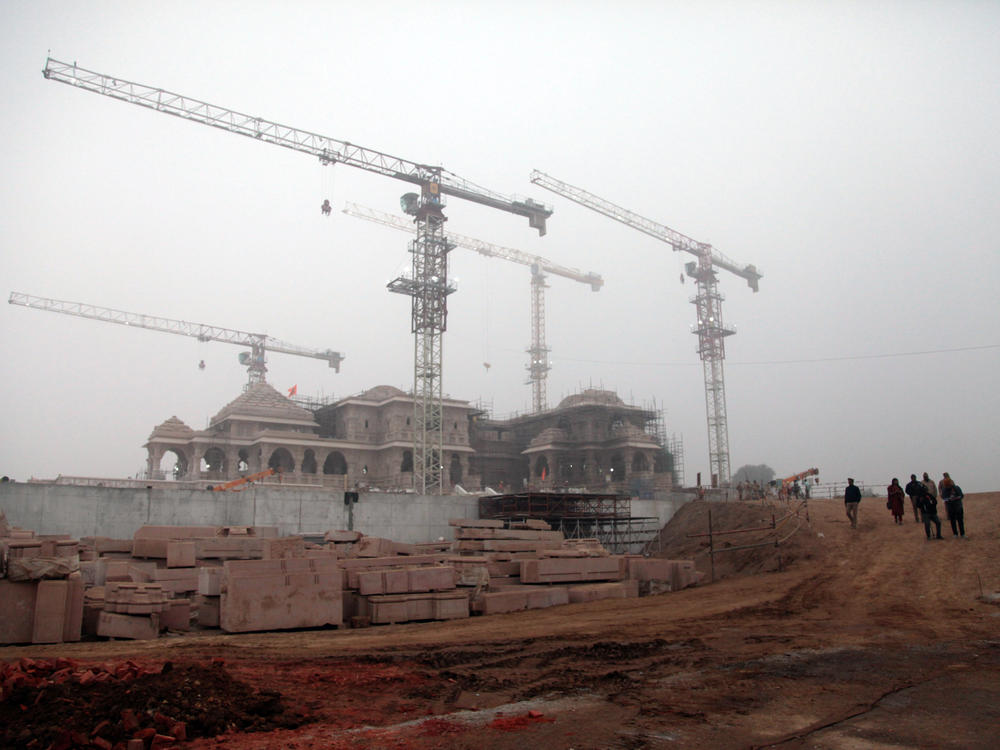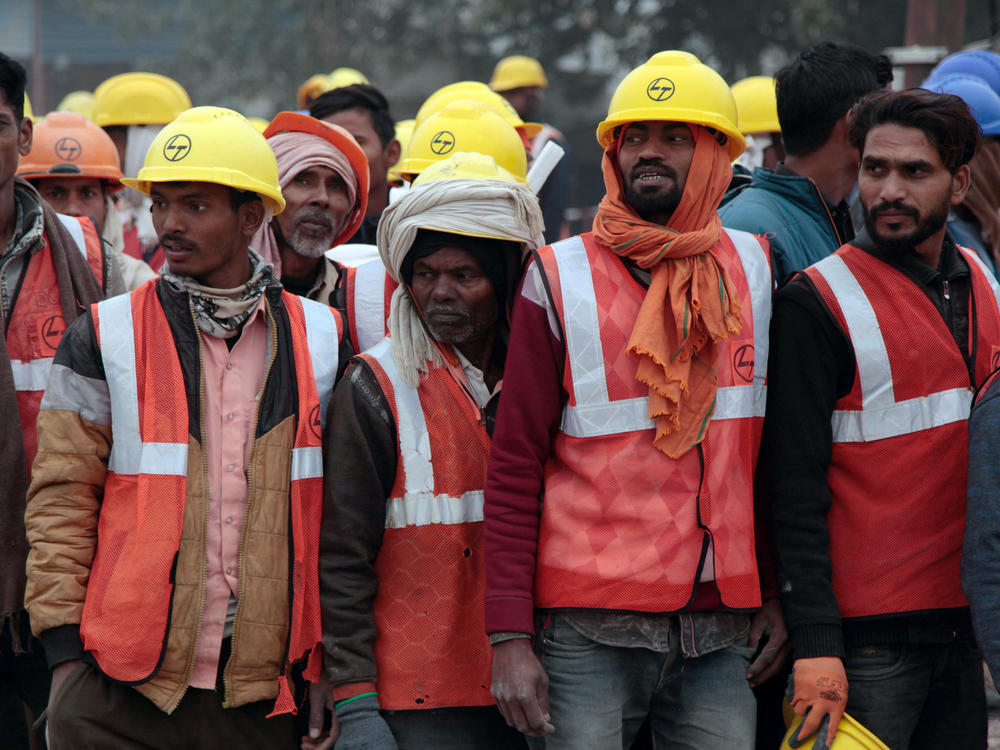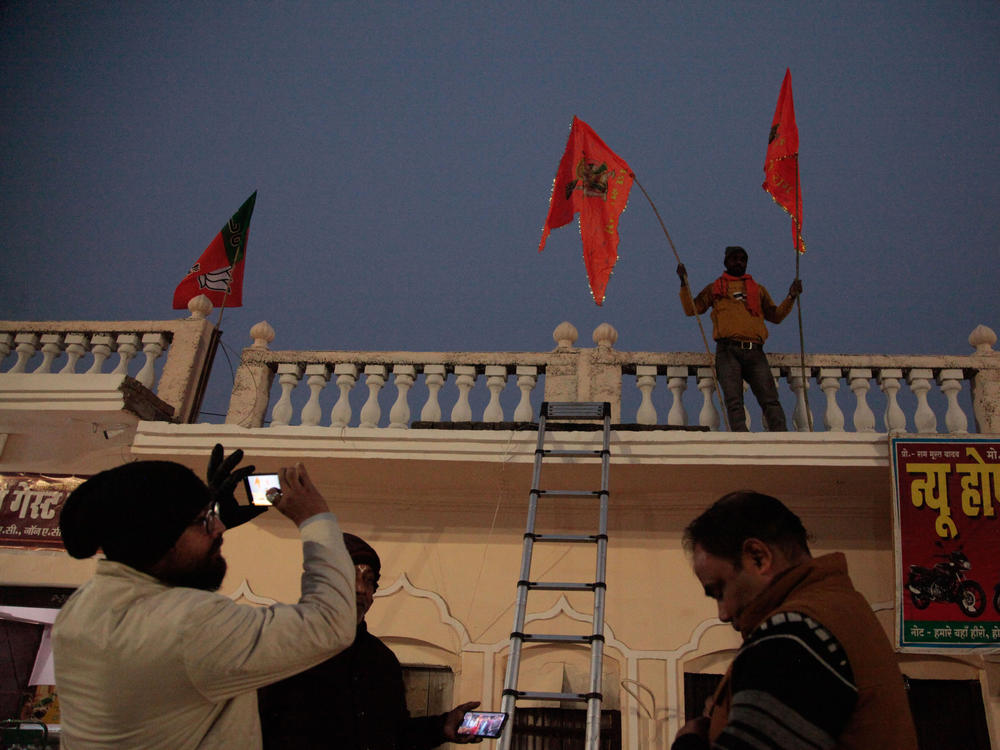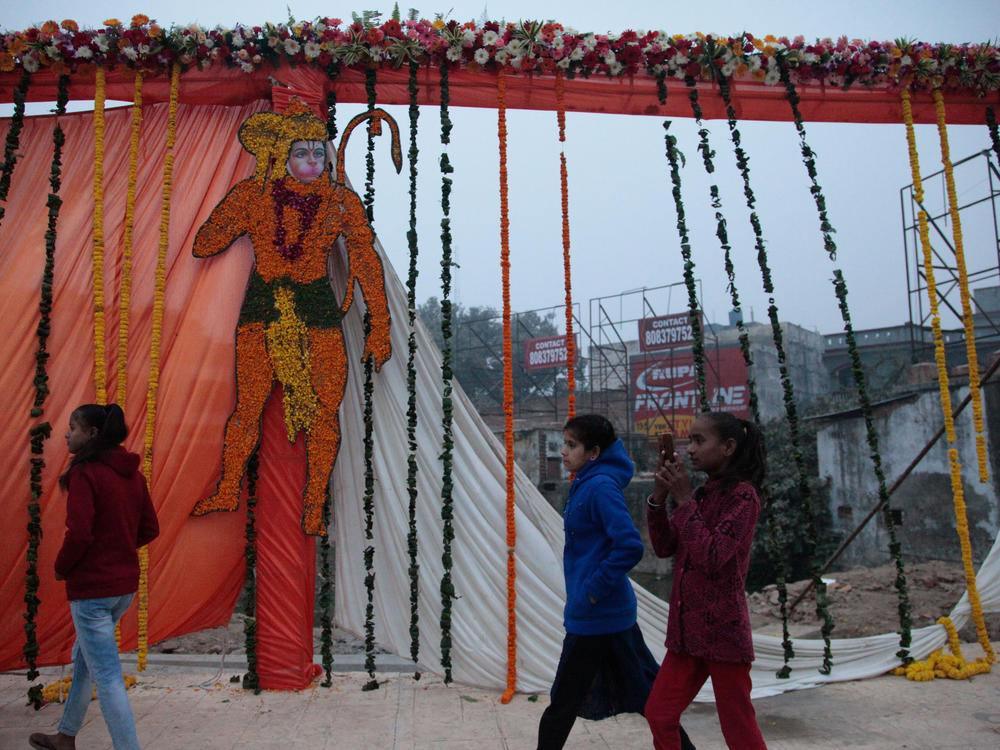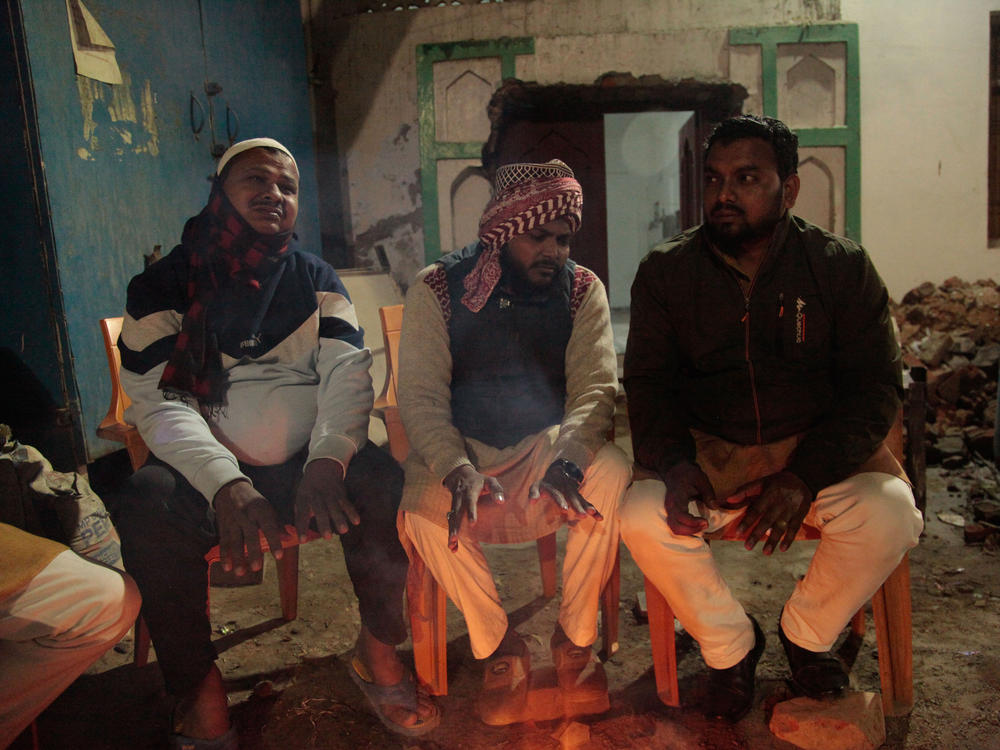Section Branding
Header Content
India's Modi to inaugurate Hindu temple in Ayodhya, where rioters destroyed a mosque
Primary Content
AYODHYA, India — More than 30 years ago, rioters destroyed a historic mosque in this holy Hindu city — a seismic event that critics say continues to help transform India from a secular democracy into a Hindu nationalist state.
On Monday, a new Hindu temple will be consecrated on the mosque's old grounds, with Prime Minister Narendra Modi participating in the rituals. The consecration comes ahead of India's general elections this spring, with Modi likely to secure a third consecutive term in office.
But there's a problem: The new temple isn't completed.
On a late-December day, during a tour of the compound arranged for foreign journalists, dozens of workers in bright-yellow hard hats walked past police in green fatigues sporting assault rifles. They filtered past a watchtower, past a sandbagged police checkpoint that guarded the entrance to the sprawling construction site, surrounded by high walls of corrugated tin. Facial recognition cameras registered the men, who then ducked through metal detectors.
As they entered, the workers chanted, "Jai Shri Ram!" or "Victory to Lord Ram," one of the most revered deities of the Hindu pantheon. Over the years, the chant has become a rallying cry of Hindu nationalists, who believe India should serve its Hindu majority instead of being a secular, constitutional democracy that promises equal rights to all.
Thousands of rioters shouted the same chant in December 1992 as they converged on Ayodhya's 16th century mosque known as the Babri Masjid, pulling apart and demolishing the three-domed structure with sticks, axes, hooks and ropes. The rioters believed the site was the birthplace of Lord Ram. The claim is around a century old but gained steam in the 1980s and 1990s as Hindu nationalists, including Modi's Bharatiya Janata Party (BJP), rallied around the issue. They argued that previous governments had favored India's Muslim minority over its Hindu majority by not allowing a Hindu temple to be built on the site of the mosque.
The mosque's destruction triggered some of India's worst communal violence since independence in 1947. Thousands of people, mostly Muslims, were killed.
The BJP briefly came to power in the years after the mosque's destruction. In 2014, led by Modi, the party came to power again, winning a majority of seats. Among its main promises: to build a temple on the very spot where the Babri Masjid once stood.
Construction began in 2020, after India's Supreme Court handed over the land to Hindu litigants. Modi himself laid the foundation stone. The trust overseeing the construction had planned to ready the temple within three years, says Girish Sahasrabhojanee, the design construction manager.
When foreign journalists were invited to the site last month, monkeys were swinging off the scaffolding that enveloped the temple structure. It's built to inspire awe, with dozens of columns and cascading arches, approached by stone stairs. Large cranes hefted heavy stones, including intricately carved sandstone, into place.
Standing on a dusty walkway at the 70-acre site, Sahasrabhojanee says the temple will take another year and a half to complete. But the trust is impatient to see the Ram idol consecrated, a ritual he describes as an "invitation to the Almighty, the formless Almighty, to come and start living in that form." He says 21 priests will oversee the ritual along with Modi.
Critics of the Indian prime minister say the real reason for the rushed ceremony is to allow Modi to participate in the process of consecration ahead of this year's parliamentary elections.
"Opening this in January is critical for [the BJP] to go to elections with this feather in their cap and saying: 'I did this,'" says Valay Singh, an independent journalist and author of Ayodhya: City of Faith, City of Discord.
"It's a very big, actually, launchpad for upcoming elections in May," Singh says. "That's one reason why they seem to be in a rush to inaugurate the temple, even though it is not fully complete."
The BJP has turned the temple consecration into a national event. Around 8,000 dignitaries are invited and are expected to arrive on dozens of chartered planes. The ceremony will be livestreamed, and the government has announced a half-day holiday for employees. In Mumbai and New Delhi, hawkers sell celebratory orange flags and bunting.
"Now Lord Ram has a home," says Usha Pandey, a single mother raising two teenage daughters in Ayodhya.
Pandey and her family are admiring a new, temporary barrier made of billowing orange fabric and marigold garlands that appears to have been erected to conceal the view of the slum where Pandey and her family live.
Do they mind that their homes are now out of sight, presumably so tourists flocking to the temple won't see a slum? Pandey shrugs. "No," she says with a smile. "It looks nice and now we have flowers near our home."
Pandey gestures to the newly refurbished railway station nearby and the new bridge that links to the new airport. She says, "Before Modi, Ayodhya was a dump."
But she says all this development hasn't benefited residents like her. She says she struggles to earn $10 a day as a laborer for hire, digging roads and bricklaying. She hopes Modi will now turn his attention to creating reliable jobs with steady pay for workers like her.
Her family nods. They believe Modi can do it. He has done all this.
Analysts say that goodwill for the Indian prime minister and the way he is seen as upholding the Hindu faith and identity of so many Indians are what will likely carry his party to victory in upcoming elections.
But Modi's presence at the temple consecration "essentially means a political declaration in favor of Hindu supremacy," argues Ashutosh Varshney, director of the Saxena Center for Contemporary South Asia at Brown University and co-author of a recent essay comparing India's Hindu nationalism to Jim Crow racial segregation policies in the United States.
Varshney says Modi's involvement signals the end of a decades-long effort by Indian leaders to "live by the principle, the idea of religious equality." And the consequences have been dire, he says, for India's minorities, particularly its 200 million Muslims, the largest minority, who make up 1 in every 6 Indians.
"Given the history of India," Varshney says, "Hindu primacy and peripheralization of Muslims are simply two sides of the same coin. You cannot have Hindu primacy without reduction of Muslims to second-class citizens."
It's a sentiment some of Ayodhya's Muslim-minority residents appear to agree with. Reuters reported last month that a dozen Muslim men planned to send family members away before Jan. 22, fearing violence at the hands of Hindu visitors.
Several thousand Muslims live in the vicinity of the new Hindu temple. Down the road from Pandey and her family, Mohammad Azem Qadri and his friends sit outside a crumbling mosque, warming themselves at a fire built of wood and plastic.
Qadri says all this new development, like the new bridge and airport, isn't for them — Muslims.
"The government wants Muslims to leave Ayodhya," he says, as his friends nod in agreement.
He refers to the 5 acres of land that the Indian Supreme Court ordered the government to give the Muslim community to build another mosque after rioters destroyed the Babri Masjid. That land was meant to be near the site of the new Hindu temple or in a "suitable prominent place in Ayodhya." The court did not explain why, but it was presumably to offer the Muslim community a new focal religious site after the iconic three-domed mosque was destroyed.
But local media report that the land the Muslim community was allocated is 13 miles from the center of town. Construction hasn't begun yet because the community hasn't been able to raise enough money. The government hasn't stepped in to help, although a Muslim BJP official is now heading up fundraising. The organization established to construct the mosque says it hopes to break ground in May.
But Qadri and his friends say they're unlikely to ever go there. They'll stick to their local small mosques, tucked between homes and shops in Muslim-dominated areas.
Devout Muslims pray five times a day. If they wanted to worship at the new mosque, Qadri says, they'd have to leave Ayodhya.
Copyright 2024 NPR. To see more, visit https://www.npr.org.
